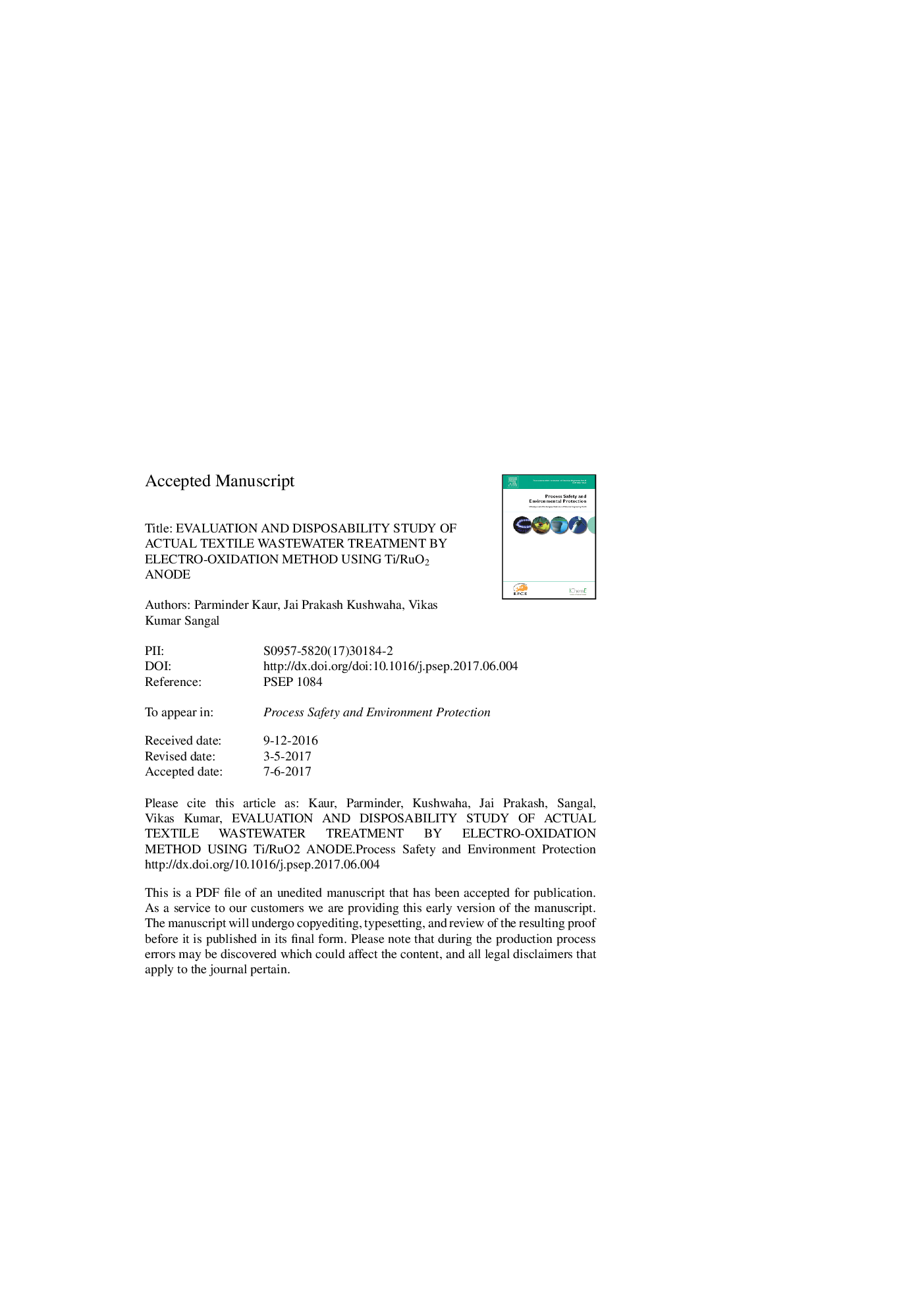| Article ID | Journal | Published Year | Pages | File Type |
|---|---|---|---|---|
| 4980635 | Process Safety and Environmental Protection | 2017 | 38 Pages |
Abstract
Electro-oxidation (EO) treatment performance for actual textile wastewater using RuO2 coated Ti electrode (Ti/RuO2) was studied, and effects of EO process parameters like pH, current (i) and electrolysis time (t) on percentage chemical oxygen demand removal (S1), percentage color removal (S2) and energy consumed (S3) were investigated. Box Behnken Design was used for experimental design and data analysis. Furthermore, pollutants oxidation method involved, direct and/or indirect oxidation, was also investigated. Safe disposability of treated wastewater was examined through spectrophotometric and GC-MS analysis by identifying eliminated organic compounds and transformation products in treated effluent. Moreover, operating cost (electrode and electricity cost) analysis was also performed to evaluate the economic feasibility of the process. At the optimum condition, the actual values of S1, S2 and S3 were found to be 80.0%, 97.25% and 0.679Â Wh, respectively. Kinetic study showed faster COD removal than color, revealing rate constant and R2 values for S1 and S2 to be 0.025Â minâ1 and 0.015Â minâ1; 0.988 and 0.986, respectively. GC-MS analysis of the EO treated wastewater revealed that most of the organics were completely eliminated during EO process. The presence of chlorinated organic compounds and other transformation products with the already present compounds in untreated textile wastewater was also detected.
Related Topics
Physical Sciences and Engineering
Chemical Engineering
Chemical Health and Safety
Authors
Parminder Kaur, Jai Prakash Kushwaha, Vikas Kumar Sangal,
